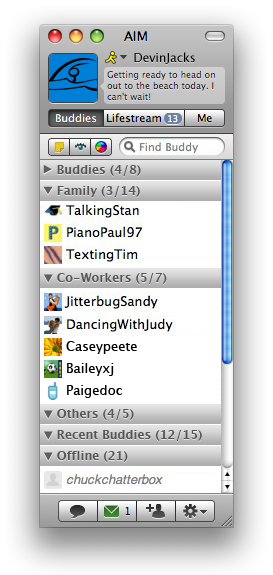

Vack in 1994, AOL operated a very commercial dial-up Internet service that charged users an hourly fee when they were connected. He was a former IBM staffer, and during his time at Big Blue he had worked on some of the first standards to connect computers over the Internet (Transmission Control Protocol/Internet Protocol or TCP/IP).īefore they developed AIM, Appelman created the buddy list. The main driver for AIM however seems to have been Barry Appelman. Indeed, when they showed their creation to AOL management, they received a distinctly lukewarm reception.Īppelman and Bosco were Unix programmers, whereas Harris had been a programmer at a small web browser company purchased by AOL. It should be noted that they were not employed to build a messenger product. Which makes the fact that the iconic messaging program AOL Instant Messenger (AIM) was closed down last week on 15 December, worthy of a Tales In History examination.ĪIM was created by AOL in May 1997 and rapidly established itself as the most popular service in the US, with its famous “Running Man” mascot logo.ĪIM was the result of three men, Barry Appelman, Eric Bosco and Jerry Harris, all of whom worked at AOL in the 1990s and early 2000s as engineers. The ability of being able to use your computer to fire off a quick IM to a friend or colleague, without the need to dig out a mobile phone number to send a SMS message, or open up an email program and look up their email address, was a very attractive proposition to computer users contending with often painfully slow (and not ‘always-on’) dial-up Internet. There is no question that the Internet has transformed the way the world communicates, especially after people began to adopt Instant Messaging (IM) in huge numbers back in the 1990s.


 0 kommentar(er)
0 kommentar(er)
